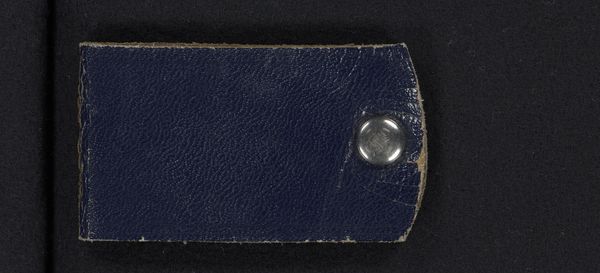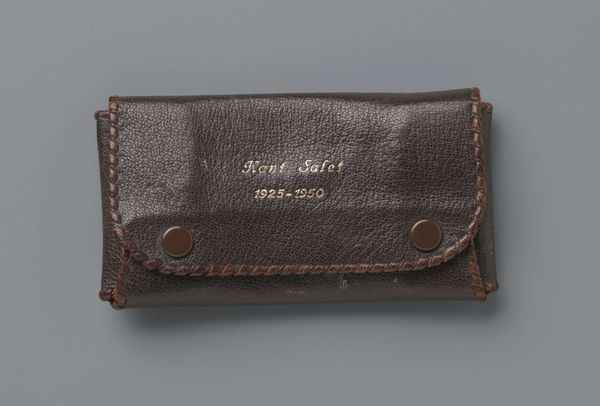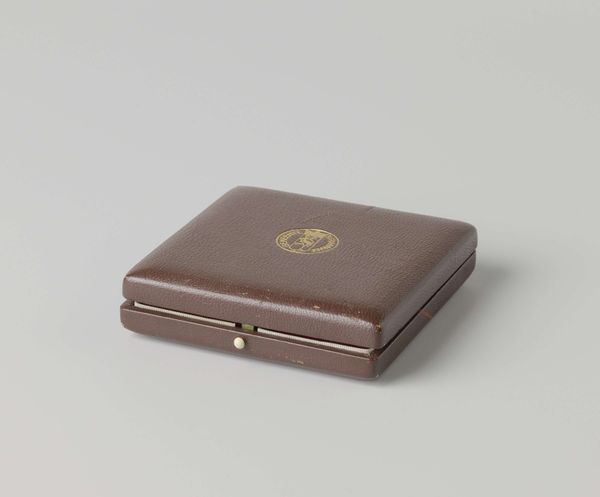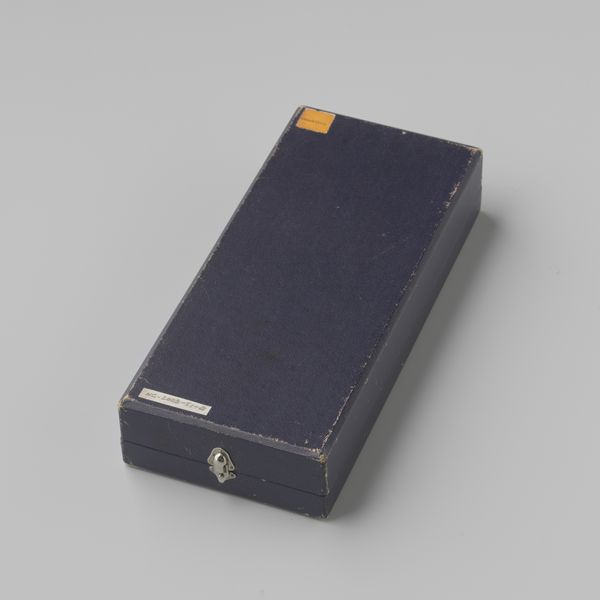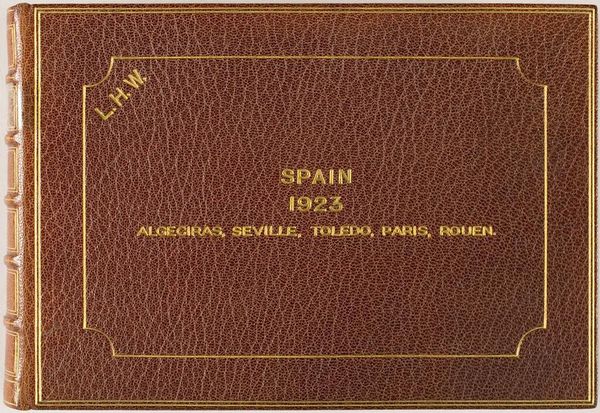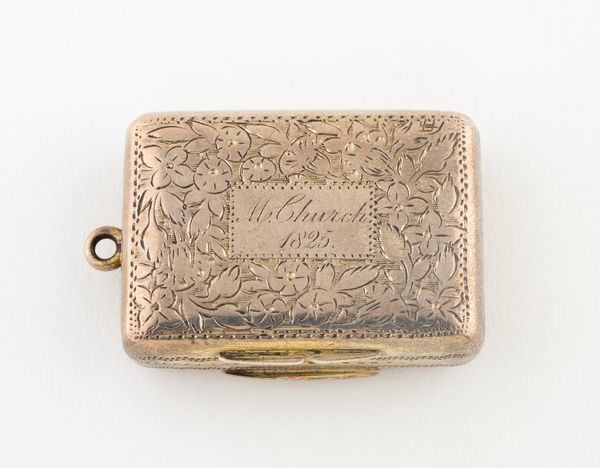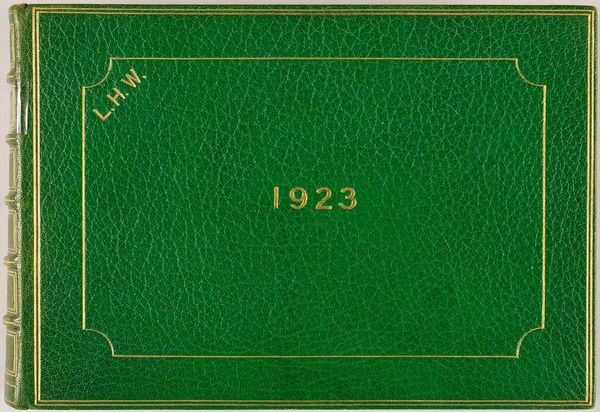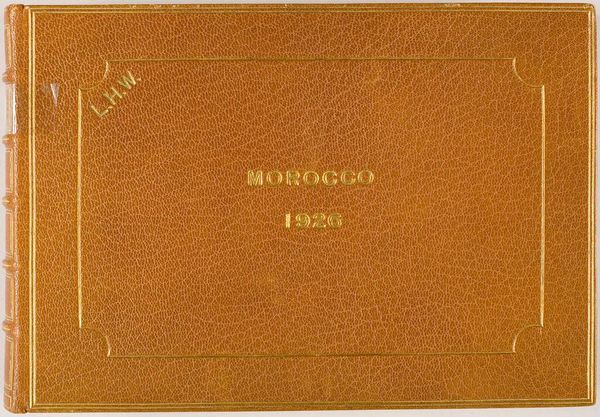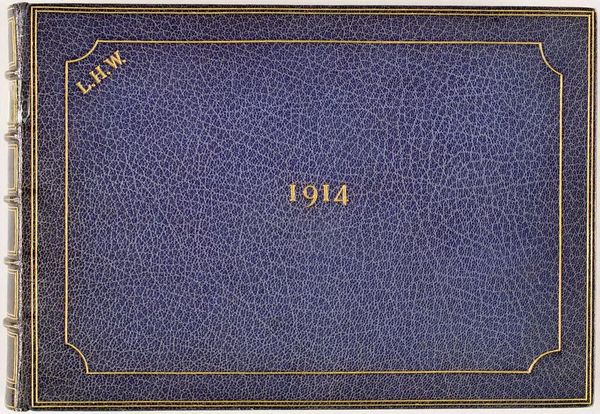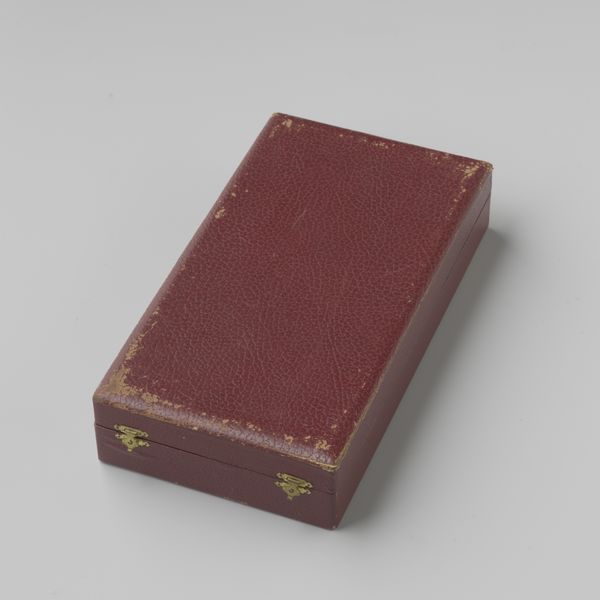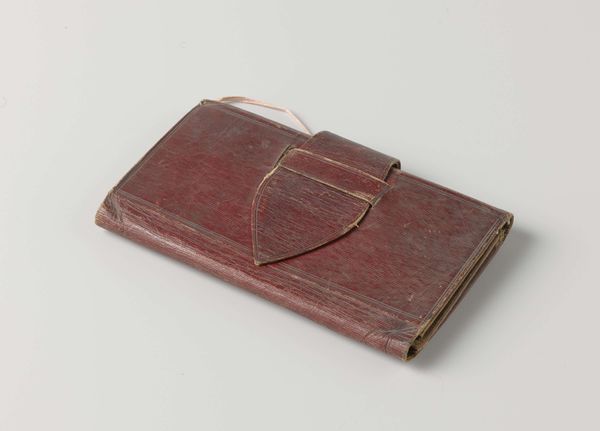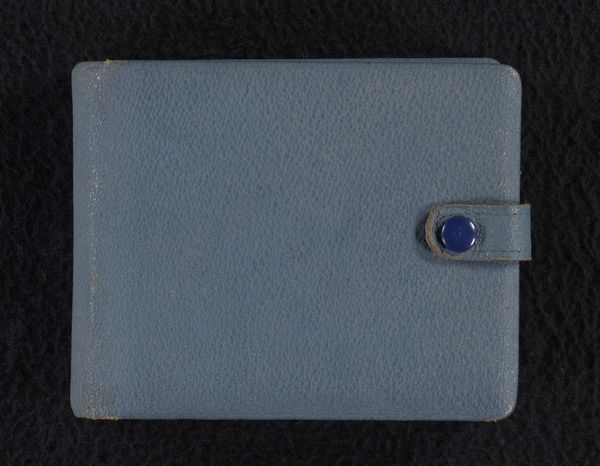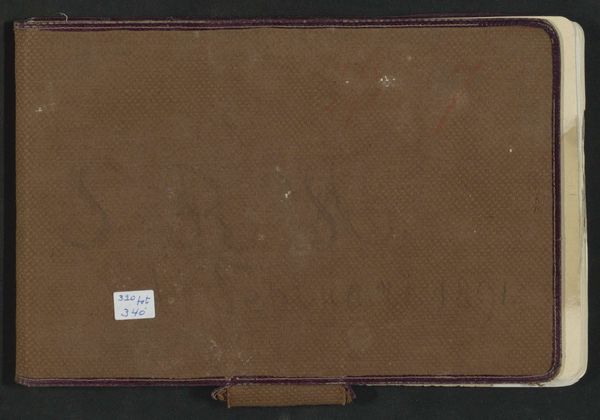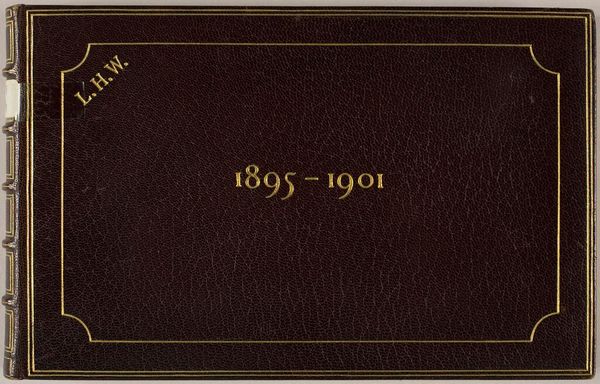
Naaidoosje van blauw kunstleer waarop staat "Aan L.W. van der Meulen Nulle namens het Kant Salet 1925-1950" 1903 - 1950
0:00
0:00
photography
#
still-life-photography
#
appropriation
#
photography
Dimensions: height 3.5 cm, width 15 cm, depth 8 cm
Copyright: Rijks Museum: Open Domain
Curator: What a striking still life photograph. I believe it's simply titled, "Naaidoosje van blauw kunstleer waarop staat 'Aan L.W. van der Meulen Nulle namens het Kant Salet 1925-1950'," dating from sometime between 1903 and 1950, and its author is anonymous. Editor: My first impression? A curious sense of intimacy. It's a close-up, almost documentary, study of a seemingly ordinary object, yet it evokes a time and a place that feels incredibly specific. Curator: Precisely! This object, likely a sewing box made of artificial blue leather, becomes a potent symbol of a particular social history. The inscription reveals its function as a gift from the "Kant Salet" – likely a lace-making society – to L.W. van der Meulen Nulle, commemorating their service from 1925 to 1950. This positions the photograph at the intersection of craft production, social networks, and commemorative practice. Editor: It really highlights how objects, even mundane ones, are deeply embedded in the social fabric. The photograph seems to emphasize the worn materiality of the box, hinting at the labor and the passage of time embodied within it. It speaks volumes about the culture surrounding textiles and craftwork of that era. Were such societies common? Curator: Indeed. Lace-making and other needlecrafts often served as important social activities, particularly for women. Societies like the "Kant Salet" provided not only a space for collaborative production but also a locus for community building and the transmission of skills. This photograph transforms the simple act of giving a gift into a powerful assertion of social connection. The photographic still-life here makes the work’s humble origins even more powerful. Editor: Looking at the style and the tight, cropped framing, I’d guess the image was intentionally arranged as such to lend the image more weight as an object itself. Curator: The composition and detail really do elevate what would otherwise be a mere product into something worthy of reflection. It's this relationship between production, community and representation which I find so compelling about the image. Editor: Ultimately, this photograph transcends the object itself and becomes a tangible trace of social relationships and historical circumstances. It invites us to contemplate the hidden stories behind everyday things and the value that societies place on craft traditions and interpersonal connectivity. Curator: And that invitation allows us to consider, through both history and material examination, the value and story of such traditions and gifts within our present context.
Comments
No comments
Be the first to comment and join the conversation on the ultimate creative platform.
